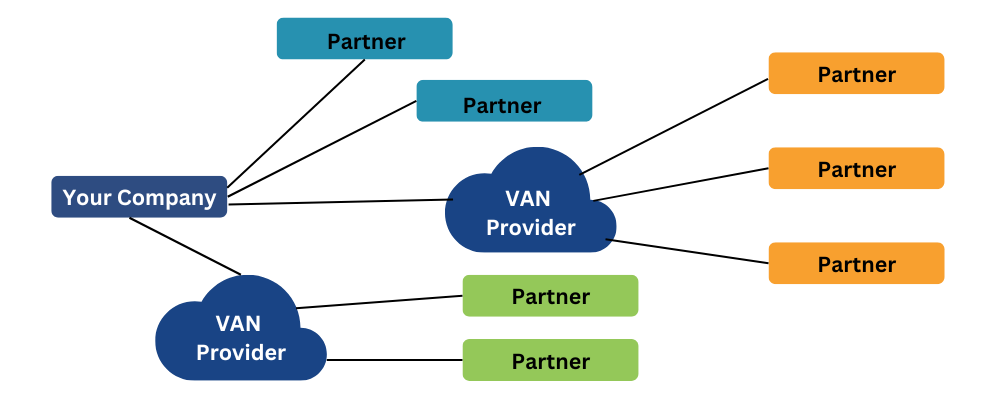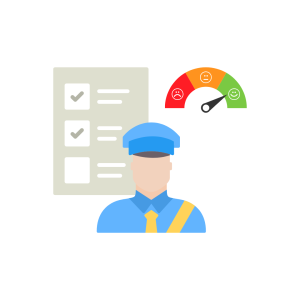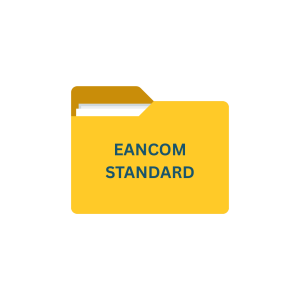Introduction
Business partnerships today have grown incredibly complex. Walmart manages a network of 100,000 business partners while BMW works with 12,000 suppliers. Companies face unprecedented challenges in handling these big business relationships. The biggest problem shows up in IT spending – 40% of the budget go toward fixing existing technology issues.
A hybrid integration platform provides a powerful answer to these growing challenges. These platforms help organizations combine smoothly cloud applications with legacy systems. They automate data exchange and remove error-prone manual processes. Companies gain up-to-the-minute visibility into their operations and can track everything from orders to shipments.
This blog walks you through how hybrid integration platforms work. You will learn their key features and practical implementation steps. The guide will help you understand the tools and technologies that can change your business operations – whether you are starting with b2b integration or upgrading existing systems.
Key Takeaways
- A Hybrid Integration Platform (HIP) is a comprehensive framework connecting diverse business systems across on-premises, cloud, and SaaS environments.
- Critical B2B Integration Components:
- EDI and API integration capabilities
- Cloud connectivity options supporting multiple protocols (AS2, SFTP, MQ, HTTP)
- Advanced data transformation tools with real-time validation and error identification
3. Implementation Considerations:
- Choose the right integration partner with expertise in B2B solutions
- Align the platform with both multi-cloud and hybrid cloud data strategies
- Ensure robust security measures and compliance with industry-specific regulations
Fundamentals of Hybrid Integration

The modern digital world needs a sophisticated approach to connect business systems of all types. A hybrid integration platform (HIP) works as a broad integration framework that naturally connects all environments. It links direct data sources, applications, and APIs, whatever their location – on-premises, IaaS, PaaS, or SaaS.
Integration architecture provides organizations with a strategic framework to track connections and data flows between different systems. It creates a blueprint that shows how software applications interact, share data, and work together to complete business processes.
We implement these core integration patterns:
- API Gateway Pattern for centralized request handling
- Event-Driven Architecture for real-time responsiveness
- Microservices Architecture for Adaptable Solutions
Modern architecture needs integration solutions that follow key qualities. The architecture must be consistent and simple. It also needs to be hybrid-aware and agile at scale. Commport Communications has built B2B solutions around these principles to provide detailed EDI, VAN, and GDSN capabilities.
Integration architecture must include basic principles like modularity, reusability, and standardization. These elements help organizations adapt to changing business requirements while streamlining processes.
Integration architecture in hybrid environments changes faster now. We prioritize security measures that protect sensitive information and ensure compliance with industry standards. This approach has become vital as integration architecture enables real-time information exchange between business applications.
Critical B2B Integration Tools and Technologies
Commport Communications understands modern B2B integration needs advanced technologies blended with traditional methods. Our experience shows successful integration relies on three key components that create uninterrupted business operations.
EDI and API integration capabilities
Electronic Data Interchange (EDI) continues to be the backbone of B2B communications and handles up to 85% of supply chain transactions. Our integrated approach combines EDI’s reliability with API’s immediate capabilities to provide a detailed solution for modern business needs. This dual approach helps our clients keep their existing EDI infrastructure while adding new API-driven innovations.
Cloud connectivity options
We build strong cloud connectivity solutions that support deployment models of all types. Our platform uses security-rich internet communications protocols to create a protected environment for data exchange. The platform supports multiple protocols, including AS2, SFTP, MQ, and HTTP, which ensures compatibility with different systems and business requirements.
Data transformation tools
Data transformation is crucial for successful B2B integration. Our tools provide:
- Visual data mapping and field relationship visualization
- Real-time data validation and error identification
- Automated data cleansing and normalization
- Support for multiple data formats (XML, iDOC, JSON, CSV)
Advanced Features: Our detailed monitoring capabilities track changes to data configurations, schemas, and processing rules. The audit log functionality keeps detailed records of all transformations to ensure data integrity throughout the integration process.
Our integrated solution suite helps businesses optimize their operations while maintaining the highest standards of data security and compliance. The platform supports both traditional EDI processes and modern API-driven interactions to create a unified environment for all B2B communications.
Implementing Hybrid Cloud Integration
Note that hybrid cloud integration needs careful planning and strategic deployment. At Commport Communications, we have seen how a well-laid-out hybrid cloud setup can improve B2B operations through our detailed EDI and cloud solutions.
Integration workflow design
To cite an instance, our integration workflow design focuses on implementing resilient security measures in both on-premises and cloud environments. Our approach uses Software-Defined Networking (SDN) to improve network operations’ flexibility and manageability. We manage to keep workload portability through advanced technologies.
Performance optimization techniques
We implement several proven strategies to optimize performance. Our monitoring tools track CPU utilization, memory usage, and network traffic.
Our integrated solutions help businesses maintain compliance and resilient data governance]. This becomes especially significant as organizations can keep sensitive data on-premises while using public cloud resources for less sensitive workloads
Advanced Integration Features and Capabilities
At Commport Communications, we know that modern B2B operations need advanced integration capabilities. Our years of experience in EDI and B2B solutions have helped us build sophisticated features that tackle complex integration challenges.
Real-time data synchronization
Our platform features powerful data sync capabilities that enable smooth data movement across hybrid cloud environments. Changes made in one system show up right away in all connected systems. We employ Change Data Capture (CDC) technology instead of traditional batch processing to handle large volumes of change data as it happens.
Error handling and recovery
Our error-handling framework gives you complete control over integration issues. We built solutions for:
- Inventory availability issues
- Pricing discrepancies
- External service connectivity problems.
The platform captures diagnostic data automatically and enriches both events and incidents. This leads to faster root cause analysis and better repair times.
Monitoring and analytics
Our monitoring dashboard provides a clear view of the entire infrastructure. We keep track of key metrics:
- Uptime and response times
- CPU and memory utilization
- Error rates per minute
- Data flow volumes
Not all metrics need constant attention. The dashboard consolidates everything in one place.
Our hybrid integration platform delivers powerful tools that connect on-premise and cloud applications smoothly. The integration process keeps sensitive data protected while meeting industry-specific compliance requirements.
Conclusion
Modern B2B operations just need sophisticated integration solutions to connect legacy systems with cloud applications. Our experience at Commport Communications shows how hybrid integration platforms make complex business relationships more efficient and automated.
Companies see measurable benefits from well-implemented hybrid integration platforms. They get immediate visibility across operations and reduce IT maintenance costs. The automated data exchange removes manual errors and accelerates business processes.
Your success with hybrid integration relies on picking the right partner. We deliver detailed B2B solutions with EDI, VAN, and GDSN capabilities, supported by decades of integration expertise. Our platform blends traditional EDI reliability with modern API capabilities to ensure continuous data flow across your business ecosystem.
Hybrid integration creates a clear path forward for businesses managing thousands of partnerships or updating existing systems. A full picture of your integration needs, appropriate deployment models, and reliable monitoring tools will set you up for success. This strategic approach helps you build a future-ready integration infrastructure that grows with your business.
Commport B2B Solutions for Electronic Commerce
Need Help? Download: EDI Buyers Guide
Unlock the full potential of your supply chain with our comprehensive EDI Buyer's Guide — your first step towards seamless, efficient, and error-free transactions
Frequently Asked Questions
A hybrid integration platform is a comprehensive framework that connects diverse business systems, including on-premises, cloud, and SaaS applications. It enables seamless data exchange, automates processes, and provides real-time visibility across operations, helping businesses streamline their B2B relationships and reduce IT maintenance costs.
Unlike traditional methods, a hybrid integration platform combines the reliability of EDI with the real-time capabilities of APIs. It offers greater flexibility, allowing businesses to maintain existing infrastructure while adopting modern technologies. This approach supports various deployment models and provides robust security measures for data exchange across different environments.
A successful B2B integration solution typically includes EDI and API integration capabilities, cloud connectivity options, and powerful data transformation tools. It should also feature real-time data synchronization, comprehensive error handling and recovery mechanisms, and advanced monitoring and analytics capabilities to ensure smooth operations across the business ecosystem.
Effective implementation of a hybrid integration platform involves careful planning and strategic deployment. Businesses should consider various deployment models (public cloud, private cloud, on-premises), design integration workflows with robust security measures, and implement performance optimization techniques. It is crucial to choose a platform that aligns with both multicloud and hybrid cloud data strategies.
Businesses should look for advanced features such as real-time data synchronization using Change Data Capture (CDC) technology, comprehensive error handling frameworks, and sophisticated monitoring and analytics capabilities. The platform should also offer tools for seamless data integration across on-premise and cloud-based applications while ensuring data protection and compliance with industry-specific regulations.





